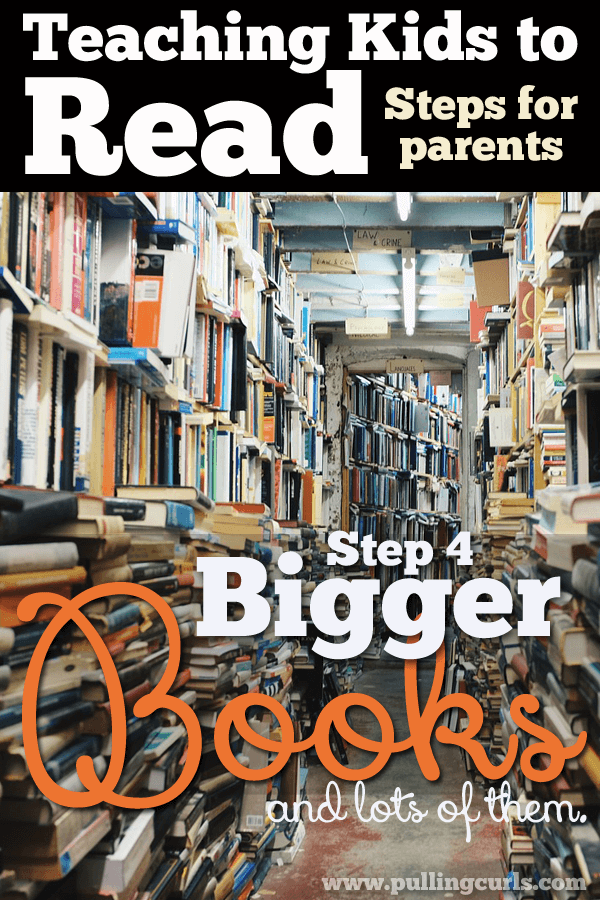We’re not talking War and Peace here, but it’s time to move onto books with complete sentences. Maybe things that normal humans would say. Things like that. 🙂


We’d use a chart again (just like on small books). Only this time I only had her read them 3 times. I don’t want her to memorize the books, I just want her to have an easier time reading them the 3rd time then she did the first. With Conner I always felt like the key was getting a LOT of books in him, and while that is important, I think I’ve learned that repeating early readers really helps build up their knowledge of words, instead of constantly having their minds attacked by new words.
BTW, looking for e-books — check out Scribd << a great alternative to Audible.
 Another key to this time period is going to the library. And doing it consistently. Every 3 weeks has been our usual. It’s long enough that I’ve forgotten how painful it can be, but short enough that they get enough books to last them. With P I tend to get 10 early readers, 10 picture books and 5 informational books.
Another key to this time period is going to the library. And doing it consistently. Every 3 weeks has been our usual. It’s long enough that I’ve forgotten how painful it can be, but short enough that they get enough books to last them. With P I tend to get 10 early readers, 10 picture books and 5 informational books.
Once your sight words are well in hand, I used them to play games. We’d lay them all out (or some out) and I’d call out the word and she’d see how quickly she could pick up the right word. Or, she’d use the words in a sentance, as context was important as well.
* Remember to have your child read to you DAILY. I would do our Fisher Price book in the morning, I’d have her read me a book (of her choosing) before quiet time, I would then read her a picture book. Before bed I’d just read her a picture book (she was often too tired to make the effort to read to me).

* Get your child their own library card. They are officially a reader at this point, and the self esteem from sharing with the librarian that they can read will be a real boost at this point.
*Allow your child to watch you reading for pleasure. I’m horrible at this, but I’m working on it. BUT, they need to know that reading is fun, and that it will be with them for their lifetime.
Teaching your child to read is a gift of time. I have also found it to be a really easy and important way to spend time with them. I’m not the type of mom to build a lego fort, but reading and worksheets was something I could do. So I did it. 🙂
Have you had successes in teaching your child to read? I’d love to hear about them in the comments section!
Check out my other reading steps:
[pt_view id=”53a410496c”]





Leave a Reply